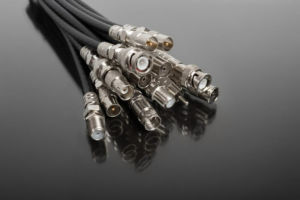Optical fiber, abbreviated as “optical fiber”, is a type of fiber made of glass or plastic, which serves as a tool for light conduction. The transmission principle relies on “total internal reflection” of light. The idea of using optical fibers for communication transmission was first proposed by the former president of the Chinese University of Hong Kong, Charles K. Kao, and George A. Hockham. Kao subsequently received the Nobel Prize in Physics in 2009 for this contribution. Currently, polymer optical fibers are applied in various fields such as medicine, decoration, and automotive.
Structure of optical fiber:
Optical fiber is a thin, flexible solid glass material consisting of three parts: the core, cladding, and coating, serving as a tool for light conduction.
Core:
Located at the center of the optical fiber, composed of high-purity silica, namely glass.
Cladding:
Surrounds the core, also composed of high-purity silica. The cladding provides reflection surfaces for light transmission, isolates light, and provides mechanical protection.
Coating:
The outermost layer of the optical fiber, composed of acrylic ester, silicone rubber, and nylon. The coating protects the optical fiber from corrosion by moisture and mechanical abrasion.
Principle of optical fiber:
Optical fiber communication utilizes total internal reflection to transmit light signals efficiently. The core of the fiber has a higher refractive index than the cladding, ensuring most of the optical energy stays within the core. This allows light to propagate through the fiber from one end to the other. At the transmitting end, information is converted into electrical signals and then emitted onto a laser beam, while at the receiving end, the light signal is detected and converted back into electrical signals. Optical fibers made of glass can transmit light signals over long distances, and combining multiple fibers into cables increases communication capacity. Light signals undergo multiple reflections within the fiber, but they may disperse or attenuate, necessitating amplification every 50 kilometers.





